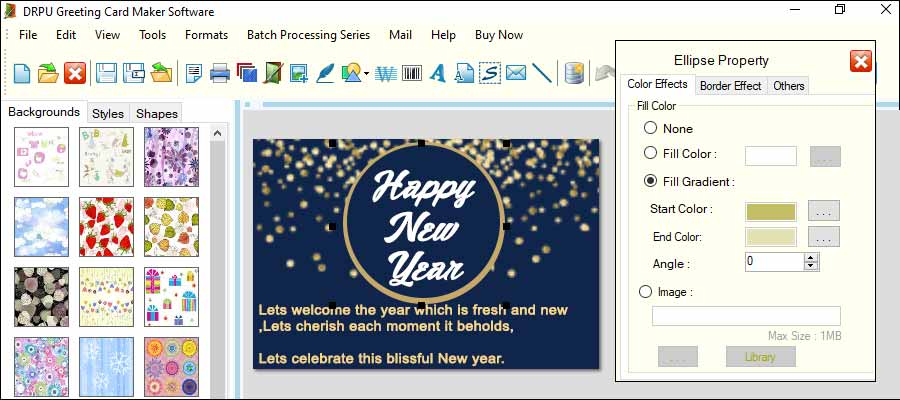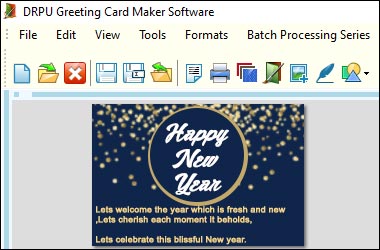| Updated on: 21/07/2023
Practices for Using Greeting Card Maker Software to Design a Greeting Card
Greeting card maker software is a powerful tool that allows you to create beautiful and customized greeting cards for any occasion. However, creating a greeting card that is both aesthetically pleasing and effective at conveying your message or sentiment requires careful consideration and attention to detail. Some best practices for using greeting card maker software to design a greeting card that is both aesthetically pleasing and effective:-

-
Determine the Purpose and Audience of the Greeting
Card
Before you start designing your greeting card, it is important to determine the purpose and audience of the card. The purpose will determine the message or sentiment that you want to convey, and the audience will determine the tone and style of the card. For example, a greeting card for a child's birthday party will have a different tone and style than a sympathy card for a friend who has lost a loved one. Determining the purpose and audience of the greeting card will help you choose the appropriate design template, graphics, and text for your card.
-
Choose a Design Template that Fits the Purpose and
Audience
Greeting card maker software typically offers a range of design templates for different occasions and holidays. When selecting a design template, it is important to choose one that fits the purpose and audience of the greeting card. For example, a birthday card for a child may have bright colors and playful graphics, while a sympathy card may have muted colors and subdued graphics. The design template should also be appropriate for the message that you want to convey.
-
Use High-Quality Graphics and Images
Using high-quality graphics and images is essential for creating a greeting card that is both aesthetically pleasing and effective. Greeting card maker software typically offers a range of graphics and images that are relevant to the occasion or holiday. When selecting graphics and images, it is important to choose ones that are of high quality and resolution. Low-quality graphics and images can detract from the overall aesthetic of the card and make it look unprofessional.
-
Use Fonts and Text that are Easy to Read
The font and text that you use in your greeting card are just as important as the graphics and images. When selecting a font, it is important to choose one that is easy to read and appropriate for the occasion or holiday. Greeting card maker software typically offers a range of font styles, sizes, colors, and effects. It is important to choose a font that is legible and easy to read, even at smaller font sizes.
-
Keep the Design Simple and Clean
When designing a greeting card, it is important to keep the design simple and clean. Too many graphics, images, and text can make the card look cluttered and confusing. A simple and clean design can make the message or sentiment of the card stand out and be more effective. When adding graphics, images, and text, it is important to ensure that they are placed in a way that is visually pleasing and balanced.
-
Personalize the Greeting Card
Personalizing the greeting card can make it more meaningful and effective at conveying your message or sentiment. Greeting card maker software typically offers a range of personalization options, including adding a personal message, adding a photo, and customizing the design template. Personalizing the greeting card can make the recipient feel special and appreciated.
-
Review and Edit the Greeting Card
Before finalizing the design of the greeting card, it is important to review and edit the card. This can include checking for spelling and grammar errors, ensuring that the design is balanced and visually pleasing, and ensuring that the message or sentiment is appropriate and effective. Reviewing and editing the greeting card can ensure that it is of high quality and professional.
